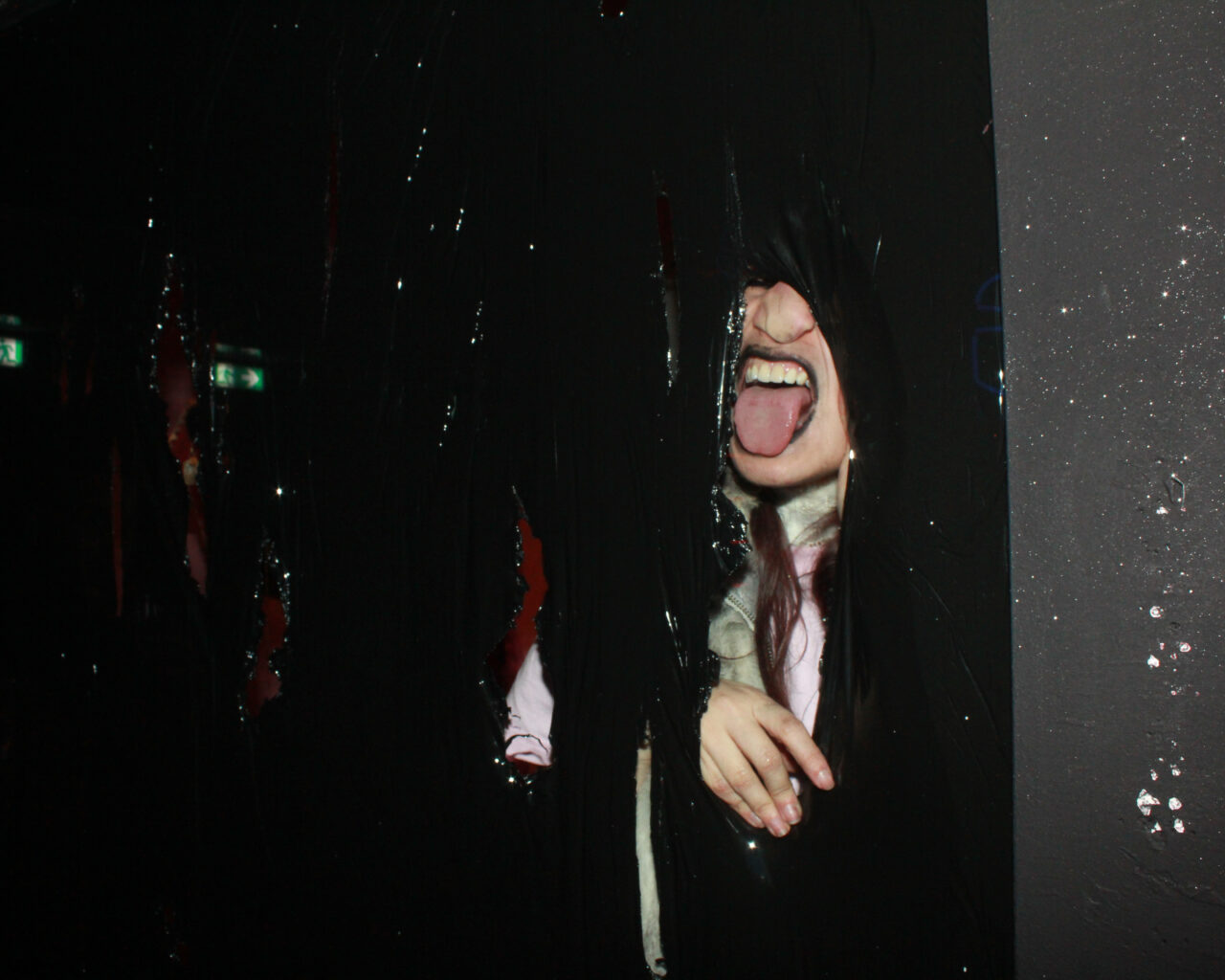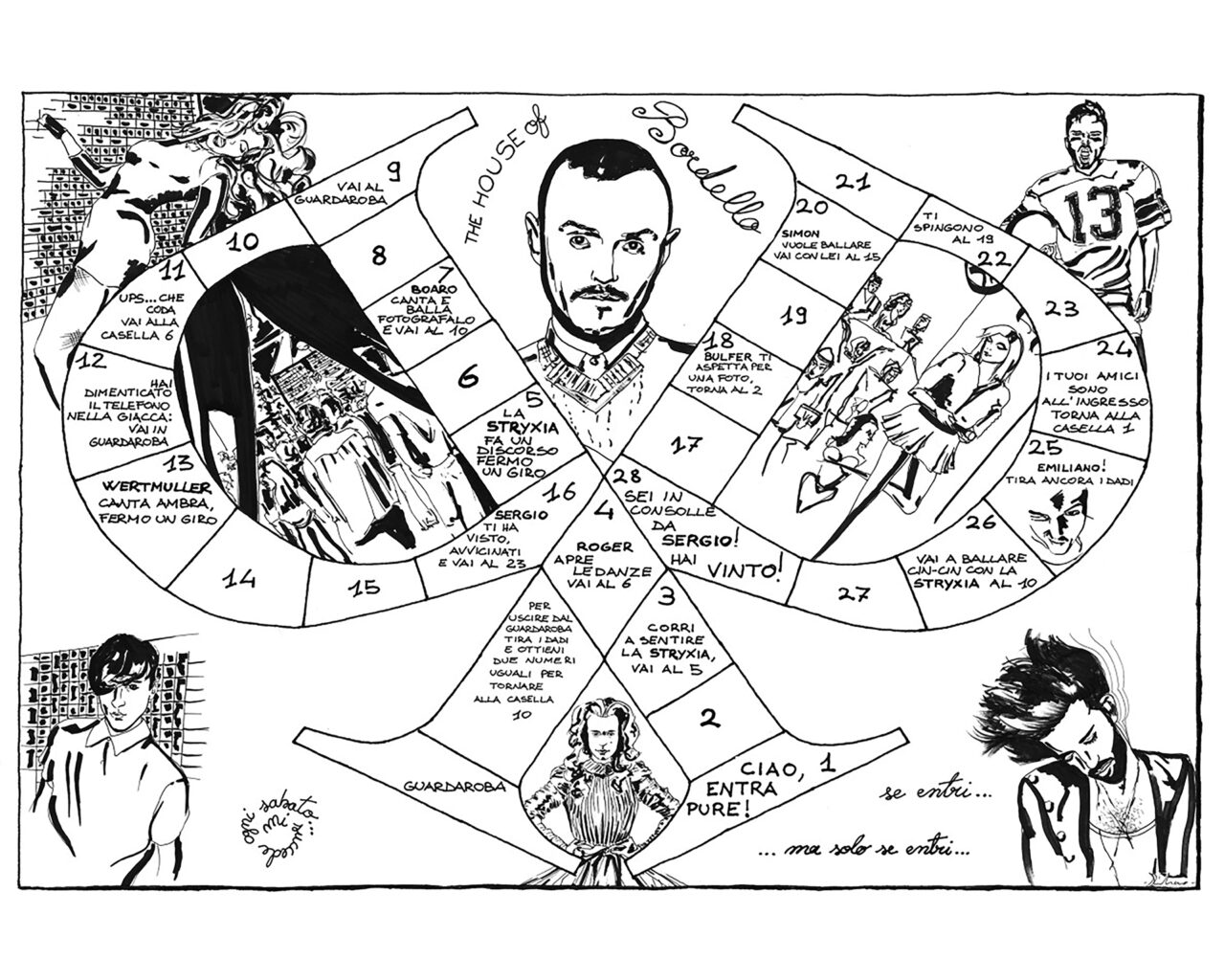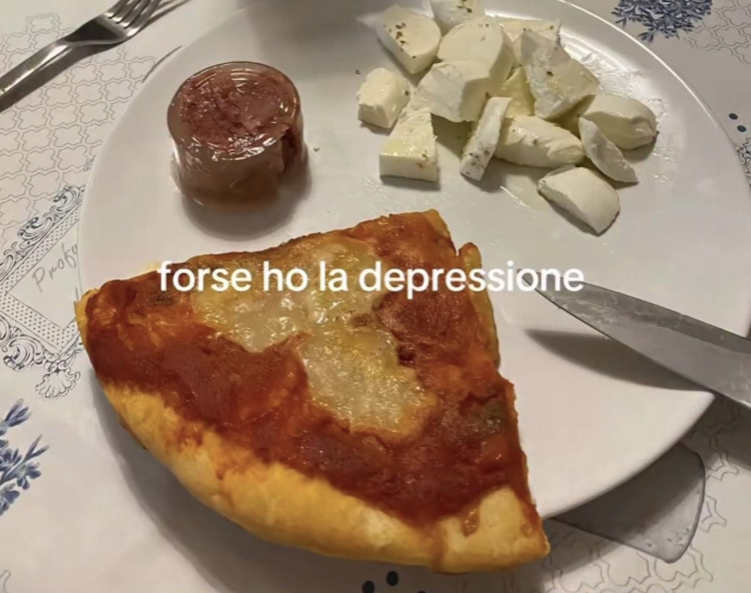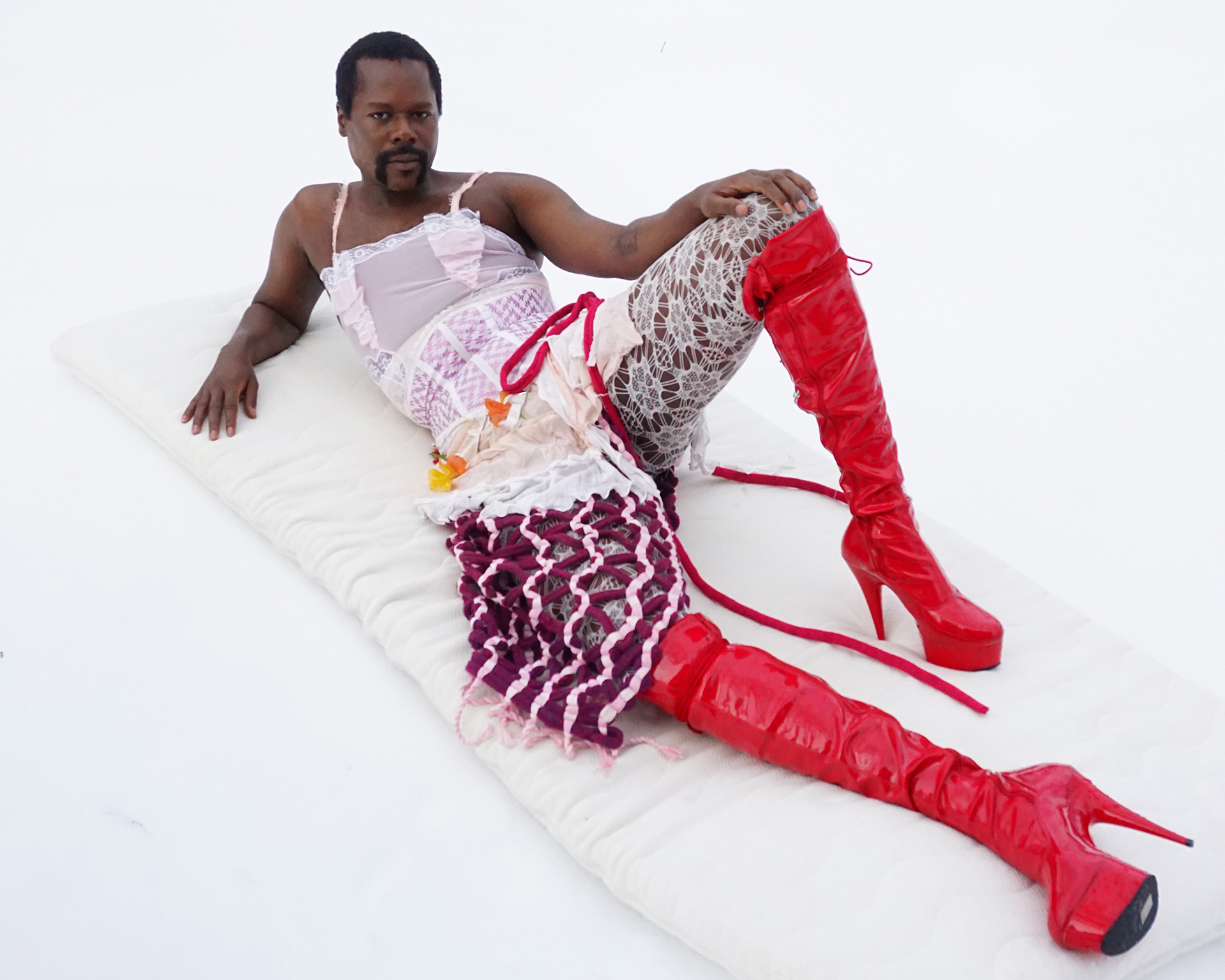
HAPPY VICTIMS – Part 2
A face to face chat with artist Damien Ajavon, a few minutes after their live performance on the Juke Box Hero’s dancefloor at Club Plastic in Milan, lip-syncing the Chaka Khan anthem Ain’t Nobody. Damien’s pictures from Queer Utopia and Queer Utopia II were displayed throughout the bathrooms, while the screens hanging on the walls projected behind‑the‑scenes videotapes of the shoots. At 1:30 AM Damien and Alice Minervini gave a spoken word reading inspired by the seminal Be Oakley’s work Mother Nature is a Lesbian.
ALICE MINERVINI
The unconditional and boundless badassery of the pacchiane
Alice Minervini: While talking with my grandmother, I found a picture of her holding hands with a friend, both wearing the traditional costume of Gimigliano (Catanzaro). I discovered that these Calabrian dresses – also found in other parts of Southern Italy – are called “pacchiana”. This term, tied to rural and working-class roots, likely comes from “pacchia” (“party”, “free time”), referring to the colorful vests worn on special occasions by working class women. Today, however, “pacchiana” is a common slur used to describe something as “tacky” and “cheap”.
Drawn to that picture and the tension between taste and social class embedded within this word, Pakkiana became my alter ego. Almost materializing as a gesture of autofiction and community-building, I started working on a research project, seeing these frictions in place in international diaspora, transfeminist artists and archives. Weaving together femininity, camp aesthetics and fashion folklore, my publication is an attempt to reclaim the pakkiana as a speculative and transfeminist figure.
Through my friend and curator Una Mathiesen Gjerde, who had worked on non-binary Norwegian Bunad costumes, I met Damien Ajavon. We connected instantly and began collaborating.

Alice Minervini – Senza titolo, 2025
DAMIEN AJAVON
Clubbing is a wild card
Damien Ajavon: I am used to performing in art contexts with my machine. Since I’m a craft maker, my art practice is working with textiles: I weave, I knit, I embroider. That space is my safe place, because I have my tools. I have never had stage fright because I don’t interact with the public, but tonight my mouth was so dry. At some point my body was like “I’m just gonna smile at people”. I did the performance as an act of resistance: we were reading poems to drunk people.
I have this privilege of being in the art world. Clubbing, even if it intersects, is still not my scene. I felt overwhelmed. People were looking at me like “Who the hell is this bitch with that makeup?”. And I was like “Hi!”. But I love this randomness.
Failure as a critique of dominant narratives
DA: Alice and I were reading poems about failure as an act of resistance. The words came from a book titled failed attempt at listening/failure as a strategy for listening, based on Mother Nature is a Lesbian, a project created by artist and activist Be Oakley, inspired by a handwritten sign seen during the New York Christopher Street Parade in 1974.
Vulnerability and defiance are part of the real world, not signs of defeat but opportunities for radical growth. Listening to those poems becomes itself a form of resistance to the contradictions that shape our world: homophobia, transphobia, racism, colonization and capitalism. That’s also the true spirit of Pride: not just a commercial celebration, but a liberatory stance.

Chai Saeidi, Queer Utopia – Davon, 2024
Queer Utopia: the personal is political
DA: Queer Utopia began from a commission I had in Oslo for Pride last year. They invited me to create art in public space and offer visibility to different bodies and features. I started from the utopian queer manifesto by Larry Mitchell, The Faggot and the Friends Between Revolutions. It was written in 1977 but remains relevant. It’s about how you transform yourself and how you manage to be in a space.
From reading the book I created three characters based on my life: the Weaver, Davon and the Faggot. The Weaver is the person who sees the future: in the Odyssey Penelope manages to dilate time by weaving and unweaving a web, while the Moirai are the weavers who control time. Davon, my masculine but also feminine alter ego, is the person I shapeshift into during the performance tonight, the one that shows in the world all dressed up with makeup on. The Faggot is the person who goes to the woods and fools around, as we go on the dating apps to seek the juice, the nectar, also known as sperm.
The first shoot with these three characters was made into a street art piece, a six-meter tall installation on a wall in Rosenkrantz’ gate, one of the most important street in Oslo. The art piece is still there, since last Pride until this September.
The development of Queer Utopia II
DA: I have lived in Norway for four years, but now I want to have a little change. I was thinking about having my characters settle in one of my favorite places: Milan. Actually, I am planning to move here. I love Paris since I grew up there, but I wanted to honor Milan. It’s effortless chic. So I wanted to give a nod to it by playing with my gender. I worked in pair with Fabio D’Onofrio and we created three new characters set in three different Milanese squares, photographed by Pietro Agostini: the Queen in Piazza Duomo, the Fairy in Piazza Gae Aulenti and the Strong Woman in Piazza Sempione.
I lived in Italy for a year and a half. I learned the weaving process moving between Biella, Foligno, Terni and Firenze. Being a queer person of color and navigating through those culturally significant places in Italy is not easy. Especially now with the current political situation, you have to be aware.
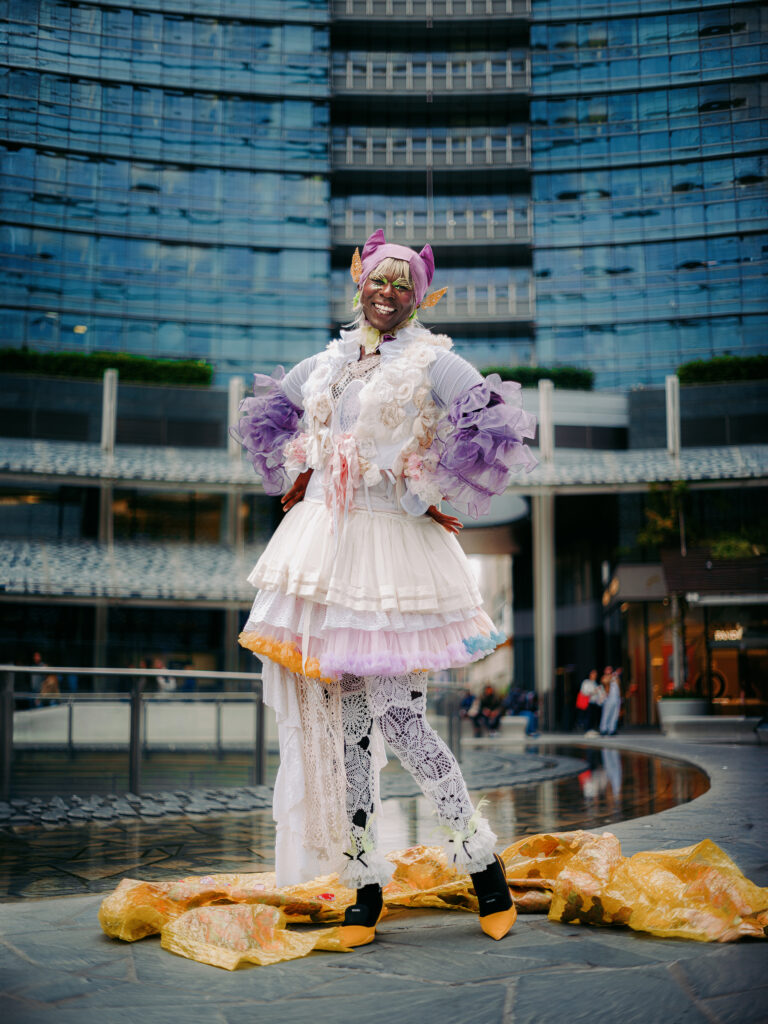
Pietro Agostini, Queer Utopia II – The Fairy, 2024
· · ·
GABRIELE DELLA MADDALENA: After graduating in History and Criticism of Art, he began working as an archivist at an antiquarian bookshop specializing in 20th-century avant-garde movements. He currently contributes to Lampoon and Style Magazine, and works as an art director for Club Domani in Milan.
ALICE MINERVINI aka PAKKIANA: Multidisciplinary artist based between Italy and London. A Goldsmiths College graduate, her projects revolve around three interconnected core themes: Reclaiming Pakkianas, Undressing Capitalism, Glitch of Intimacy. In recent years, she has been involved in projects such as the group exhibition 0800-TAKE-ME-HOME (2024), the performance Mio$$$mile (2025) and the research Forever House of Mirrors (2025).
DAMIEN AJAVON: Afropean textile artist with Senegalese and Togolese roots, blends African and Western influences to explore identity and queerness through handcrafted weaves. They participated in several international artist residencies, including Villa Ruffieux (Switzerland), Air Green at Søndre Green Farm (Norway), Institut Français of Saint-Louis (Senegal), Open Forum (Berlin, Germany), and Place des Arts (Quebec, Canada).
Header: Chai Saeidi, Queer Utopia – The Faggot, 2024




